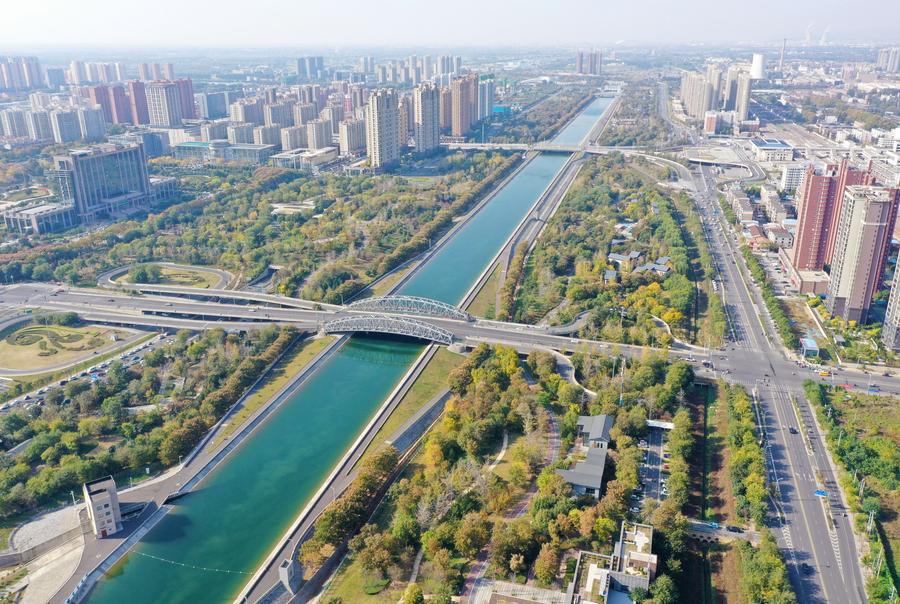
An aerial drone photo taken on Nov 5, 2024 shows the main canal of China's South-to-North Water Diversion Project in Jiaozuo, Central China's Henan province. [Photo/Xinhua]
BEIJING -- China's South-to-North Water Diversion Project, the largest of its kind globally, has delivered more than 70 billion cubic meters of water through its middle route since it started full operation in December 2014.
According to the China South-to-North Water Diversion Corporation, the massive water transfer project has become a crucial lifeline for 26 major cities and over 200 counties, benefiting approximately 114 million residents in Beijing, Tianjin, Hebei and Henan.
The impact has been particularly pronounced in Beijing, where diverted water now accounts for nearly 80 percent of the capital's urban water supply. A large proportion of Beijing's drinking water now travels over 1,000 kilometers along the project's middle route from Danjiangkou Reservoir in central China's Hubei province. The water flows north via canals and pipelines, crossing beneath the Yellow River before arriving at Beijing's water treatment plants.
In Tianjin, the project's reach has expanded to 15 of the city's 16 administrative districts, with infrastructure improvements extending water access to rural areas through various rural drinking water improvement initiatives.
An official from the China South-to-North Water Diversion Corporation said that over the decade-long operation of the project's middle route, both service areas and beneficiary populations had witnessed steady expansion.
The project has also played a vital role in ecological restoration across north China. Continuous water replenishment has helped alleviate groundwater overexploitation and restored continuous flow to major northern water systems, including the Hutuo, Yongding and Daqing rivers.
The mega water diversion project channels water over long distances from the country's water-rich south to its northern regions, where hundreds of millions once endured "absolute water scarcity" as defined by United Nations standards.